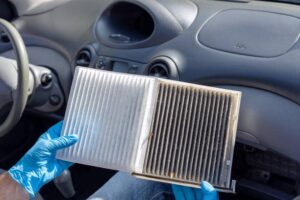To keep your car functioning properly and sustainably, it is important to regularly check the fluids in your car. A car’s fluids are like blood, and every fluid is important to the operation of your car. Keeping these fluids at the right level and in good condition can help prevent your car from breaking down and costing you a fortune in repairs. Fluids such as engine oil and coolant keep your engine running smoothly. Follow the steps in this guide to check your car’s various fluids.
1. Engine Oil:
Engine oil is probably the most important fluid to check regularly. Before checking the oil level, make sure your car is parked on a level surface and the engine has cooled down. To check the oil level, remove the dipstick, clean it, insert it all the way back in and remove it again. There are lines on the dipstick that indicate the correct amount. There should be a small gap between the high and low marks on the oil. If the oil level is low, add more oil. Also pay attention to the color of the oil. If it turns black or is very dark, your oil may need to be changed.
2. Coolant:
Antifreeze, also called coolant, prevents your engine from overheating or freezing in cold weather. Locate the coolant tank under the hood and check the coolant. Usually it is a transparent jar with lines showing the lowest and highest levels. Compare the figure with these figures. To prevent burns from hot water or steam, only open the radiator cap when the engine has cooled. To restore the coolant level to the level it should be, mix water and antifreeze together.
3. Transmission Fluid:
Transmission fluid ensures that your car’s transmission works properly and shifts smoothly. The car must work properly for this test. Locate the transmission fluid dipstick. This is usually located next to the oil tester. Remove it, clean it, replace it completely and then remove it again to check that it is flat. It should be bright red. If it is brown or smells like burnt food, you may need to replace it.
4. Brake Fluid:
Brake fluid is an important part of the car’s braking system. Under the hood you will find the brake reservoir on the master cylinder. You can check it here. Compare the amount of fluid with the high and low marks. If the level gets low, add more. Additionally, if the fluid is black instead of clear or clear, it may need to be flushed and replaced with new fluid.
5. Power Steering Fluid:
Adding power steering fluid to your car can make driving easier and smoother. To check this fluid, locate the power steering oil reservoir. This is usually indicated or shown in the owner’s manual. The reservoir usually has a dipstick or level mark on the outside to help you know how much fluid is in it. If your steering wheel is difficult to turn for no reason, check this fluid first.
6. Windshield Washer Fluid:
Although windshield washer fluid is not necessary for the technical functionality of your car, it is necessary for your visibility while driving. Usually the windshield washer fluid tanks are clearly marked and easy to find. Check the levels and add more if necessary. As a quick fix, you can use store-bought windshield wiper fluid or water mixed with a small amount of dish soap.
Conclusion:
Knowing how to perform these simple checks can help keep your car in good condition and maybe even avoid paying repair bills. Remember that you should check these fluids regularly as part of normal car maintenance. Be sure to check your car’s owner’s manual for specific instructions and information about each fluid. Regular inspections of your car not only keep it in good condition, but also keep you safer on the road.
FAQs:
1. How often should I check the fluids in my car?
You should check most of your car’s supplies, such as oil and coolant, at least once a month. But some fluids, such as brake fluid and transmission fluid, may not require frequent inspection if there are no problems. Be sure to consult your car’s owner’s manual for specific instructions.
2. What should I do if the oil in my car looks dirty?
When you check your oil and it becomes dark and dirty, it may need to be replaced. When the oil is contaminated, the engine will wear out faster and work less efficiently. It is very important to change the oil in your engine regularly.
3. How can I add gasoline or oil to the car?
Before adding oil to your car, you need to find a suitable oil tank under the hood. To prevent liquids from spilling, you should use a funnel. Add the liquid slowly and keep checking the amount to make sure you don’t add too much, which can be just as bad as too little.
4. Can different brands of the same liquid be mixed?
Different brands of the same type of fluid can be mixed as long as they meet the manufacturer’s requirements, but it is best to use the same brand and type to ensure the chemical composition and performance are always the same. If you’re not sure, check your owner’s manual or consult a professional.
5. What color should the oil in the gearbox be?
Oftentimes, new transmission fluid can turn brown or even smell burning when it’s time to replace it with a new one. If the fluid is dark in color or contains particles, a transmission check is required.




